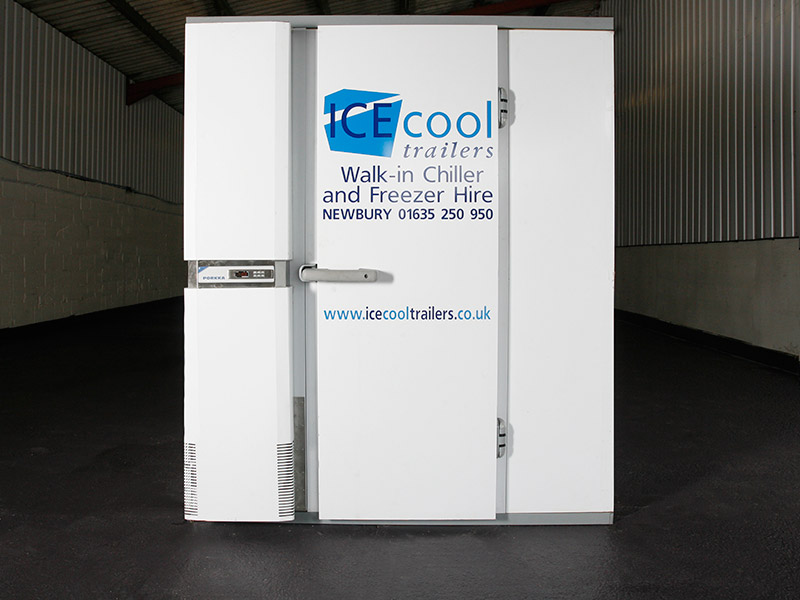How to Troubleshoot Common Walk-In Cold Room Problems

A walk-in cold room is a vital component for many businesses, from restaurants and caterers to florists and pharmaceutical companies. When your cold room starts acting up, it can disrupt operations, compromise product quality, and even lead to financial losses. While some issues may require the expertise of a qualified technician, there are common problems you can often troubleshoot and resolve yourself.
In this guide, we'll equip you with the knowledge and practical solutions to tackle those unexpected cold room hiccups and ensure your cold storage operates smoothly.
What is a Walk-In Cold Room?
Before we delve into troubleshooting, let's recap the basics. A walk-in cold room is essentially a refrigerated space designed for storing temperature-sensitive goods. It's larger than a standard refrigerator, allowing staff to walk in and access stored items. Maintaining a consistent and appropriate temperature is essential for preserving the quality and safety of perishable goods.
Common Walk-In Cold Room Problems
Even with the best maintenance, cold rooms can encounter issues from time to time. Here are some of the most common problems and how to address them:
Inconsistent Temperature
Fluctuating temperatures can be a major concern, potentially compromising the quality of your stored goods.
- Check the thermostat: Ensure it's set to the correct temperature and functioning properly.
- Inspect door seals: Damaged or worn seals can allow cold air to escape, leading to temperature fluctuations. Replace any damaged seals promptly.
- Ensure proper ventilation: Adequate airflow is crucial for maintaining a consistent temperature. Check that vents are clear and unobstructed.
- Monitor the evaporator fan: This fan circulates cold air. If it's not working correctly, it will affect temperature distribution.
Frost Build-Up
Excessive frost build-up can reduce cooling efficiency and potentially damage the cooling system.
- Check the defrost cycle: Ensure the defrost cycle is functioning correctly and defrosting the evaporator coils regularly.
- Inspect door seals: As mentioned earlier, damaged seals can contribute to frost build-up.
- Maintain proper humidity levels: High humidity can contribute to frost formation. Consider using a dehumidifier if necessary.
Strange Noises
Unusual noises coming from your cold room can indicate a problem with the cooling system or other components.
- Identify the source: Try to pinpoint the location and nature of the noise. Is it a rattling, grinding, or humming sound?
- Check the evaporator fan: A loose or damaged fan can create noise.
- Inspect the compressor: The compressor is the heart of the cooling system and can generate noise if it's malfunctioning.
- Listen for refrigerant leaks: A hissing or bubbling sound could indicate a refrigerant leak, which requires professional attention.
Leaking or Pooling Water
Water leaks can create a safety hazard and damage stored goods.
- Check the drain line: Ensure the drain line is clear and not clogged.
- Inspect the evaporator coil: A frozen or damaged evaporator coil can cause water leaks.
- Look for condensation build-up: Condensation can form on walls and ceilings, leading to dripping water. Address any areas with excessive condensation.
Electrical Issues

Electrical problems can disrupt the operation of the cold room and pose safety risks.
- Check the power supply: Ensure the cold room is properly connected and receiving power.
- Inspect the circuit breaker: A tripped circuit breaker can cut off power to the cold room.
- Examine wiring and connections: Look for any loose or damaged wires.
- Test the control panel: Ensure the control panel is functioning correctly and all settings are accurate.
Preventive Maintenance Tips
Regular maintenance is essential for preventing cold room problems and ensuring optimal performance.
Regular Inspections
Conduct routine inspections of your cold room to identify potential issues early on. Check door seals, temperature settings, and overall cleanliness.
Cleaning and Maintenance
Keep your cold room clean and well-maintained. Regularly clean the interior, including shelves and floors. Clean the condenser coils to ensure efficient heat exchange.
Training Staff
Properly train staff on how to operate and maintain the cold room. This includes understanding temperature settings, cleaning procedures, and identifying potential problems.
When to Call a Professional
While you can troubleshoot many common cold room problems, some issues require professional expertise. If you encounter complex electrical problems, refrigerant leaks, or persistent temperature issues, it's best to contact a qualified technician.
If you're looking for temporary cold storage solutions while your walk-in cold room is being repaired or serviced, you can also hire a mobile cold room in the UK to keep your operations running smoothly.
Final Thoughts
By understanding common cold room problems and following these troubleshooting tips, you can keep your cold storage running smoothly and prevent costly disruptions to your business. Remember, regular maintenance and prompt attention to issues are key to ensuring the longevity and efficiency of your walk-in cold room.
For a deeper understanding of cold room functionality, you can refer to our comprehensive guide on cold rooms explained.
Archive
Got questions? Call 01635 250 950 or send us a message